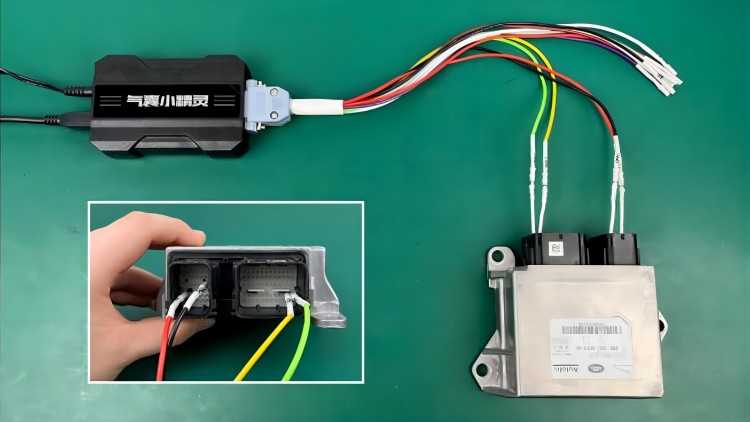Airbag systems are critical safety features in vehicles, designed to protect passengers during collisions. However, after an airbag has been deployed, whether due to an accident or as a result of a malfunction, it must be properly reset to ensure it continues to function correctly. This guide delves into what airbag reset is, why it is absolutely necessary, and outlines the key considerations vehicle owners should be aware of to maintain their safety features in optimal working conditions.
What is Airbag Reset?
Airbag reset is the process of restoring the airbag system of a vehicle to its original operational state after the airbags have been deployed. This involves several key steps:
- Resetting the Airbag Module: The airbag’s electronic control unit (ECU), or module, stores information about the vehicle’s status at the time of deployment. Resetting this module is essential to clear the crash data and to re-enable the system for future use.
- Replacing Deployed Airbags: Once an airbag is deployed, it cannot be reused and must be replaced with a new unit that meets the vehicle manufacturer’s specifications.
- Inspecting and Servicing Related Components: Other components of the airbag system, such as sensors, wiring, and the steering column module, may also need inspection and possibly replacement to ensure the entire system functions correctly.
Why is an Airbag Reset Necessary?
Resetting the airbag system is not just a recommended procedure; it is often a legal requirement to ensure the vehicle’s safety standards are maintained. Here are the primary reasons why airbag reset is necessary:
- Safety Assurance: The primary function of airbags is to protect passengers during collisions. A vehicle with a compromised airbag system poses significant risks to safety, as the airbags may fail to deploy in subsequent accidents.
- System Integrity and Functionality: Post-deployment, the airbag system’s integrity is compromised. Resetting ensures all components of the system communicate correctly and function seamlessly.
- Legal and Insurance Compliance: Driving with a known fault in the airbag system can lead to legal liabilities, including fines and penalties. Additionally, insurance claims on vehicles involved in accidents might be affected if the airbag system was not reset or was improperly serviced.
- Maintaining Vehicle Value: A fully functional airbag system is a critical aspect of a vehicle’s resale value. Ensuring the system is correctly reset maintains this value and assures potential buyers of the vehicle’s safety.
By understanding the importance of airbag reset, vehicle owners can take proactive steps to ensure their vehicles remain safe and compliant with road safety regulations. The next sections of the post will delve deeper into how airbag resets are conducted and the best practices to follow during the process.
The Airbag Reset Process

Airbag reset is a complex procedure that should always be conducted by certified professionals. Here’s a typical process:
- Diagnostic Assessment: A thorough diagnostic check is performed using specialized scanning tools to read and analyze the fault codes stored in the airbag module.
- Component Checks and Replacement: All components that triggered during the incident, such as airbags, sensors, and control modules, are inspected and replaced as needed.
- Resetting the Airbag Module: The airbag module is reset using specific software that can clear crash data and reset the system to its factory state. This step is crucial to reactivate the system.
- System Testing: After the reset, the entire airbag system is tested under controlled conditions to ensure it functions correctly and safely, confirming that all components communicate effectively and are error-free.
Do’s and Don’ts of Airbag Reset
To ensure the safety and reliability of airbag reset, here are some important guidelines:
- Do:
- Use Certified Professionals: Always have airbag systems serviced by qualified technicians who specialize in automotive safety systems.
- Follow Manufacturer Guidelines: Ensure all parts used are approved by the vehicle’s manufacturer and that the reset process aligns with the manufacturer’s specifications.
- Keep Documentation: Maintain detailed records of the reset process, including parts replaced and the diagnostics performed, for warranty and insurance purposes.
- Don’t:
- Attempt DIY Resets: Due to the complexity and safety implications, never attempt to reset an airbag system yourself.
- Ignore Airbag Warning Lights: If the airbag warning light illuminates, it indicates a potential malfunction that requires immediate attention.
- Use Non-OEM Parts: Avoid using non-original equipment manufacturer (OEM) parts, as they may not meet safety standards and could compromise system integrity.
Frequently Asked Questions (FAQs)
To help further clarify airbag reset, here are answers to some common questions:
- What triggers an airbag warning light besides deployment?
- The light could be triggered by issues in the airbag sensor, electrical problems, or a failing airbag module.
- How long does an airbag reset take?
- The duration of an airbag reset can vary but typically takes a few hours, depending on the vehicle and the extent of the damage.
- Can an airbag system be tested without deploying the airbags?
- Yes, professionals use diagnostic tools to simulate and test the functionality of the airbag system safely.
Conclusion
Airbag reset is an essential service that ensures your vehicle’s safety features function as intended after an airbag has deployed. By understanding the process and following the proper protocols, you can help ensure that your airbag system provides optimal protection. Always prioritize safety and professionalism when dealing with such critical vehicle systems.


What necessary words… super, magnificent idea